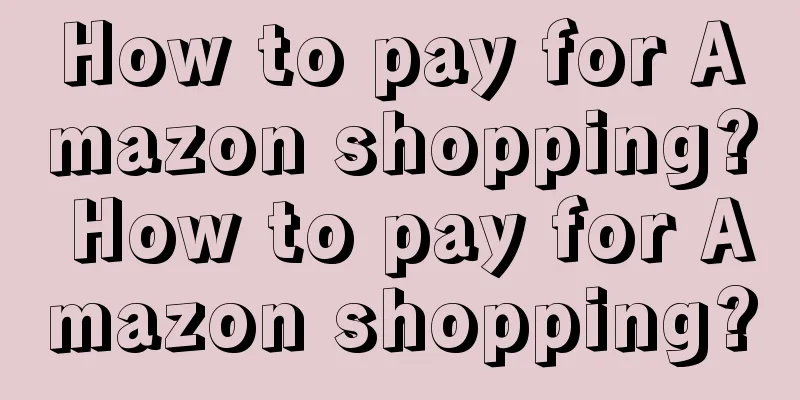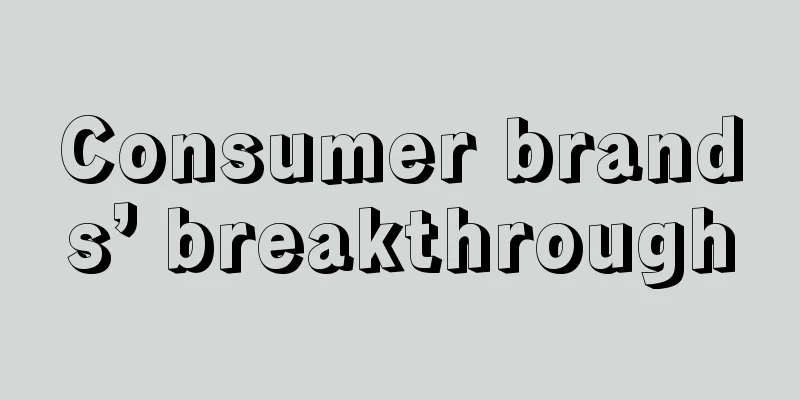Why do consumers hesitate when faced with purchasing decisions?

We can easily find that when faced with the same product, some consumers are always hesitant and find it difficult to make a quick purchase decision, while other consumers do not hesitate. At the same time, when faced with different products, the same consumer will have two completely different characteristics when making a purchase decision. Why is this? What factors affect the decisiveness of consumers in making purchasing decisions? There are two main factors: one is the complexity of product information, and the other is the negative impact of purchasing decisions. 1. Complexity of product information1. Evaluate the use value of products from different dimensionsFor target consumers, only products with use value are likely to be purchased. The use value of a product can be described from multiple dimensions. The information in these dimensions may be somewhat professional and requires certain professional knowledge to understand. The usage value of a mobile phone is usually described in terms of multiple dimensions such as screen size, CPU performance, memory size, hard drive size, battery life, and display effects. To understand the information of the dimension of "CPU performance", we need to understand the standards that describe CPU performance, such as the number of cores, main frequency, and other evaluation criteria for a series of special concepts. In order to accurately evaluate the use value of a product, consumers need to rate the use value of the product from multiple dimensions that they are concerned about, and finally summarize the scores of each dimension to get the total score of the use value of the product. The higher the total score, the more consumers agree with the use value of the product and the more they want to obtain it. 2. The more complex the product information is, the more hesitant the purchase decision isThe number of dimensions that describe the use value of a product and the difficulty of understanding its dimensional information can be collectively referred to as the "complexity of product information." The more complex the product information is, the more it costs consumers to understand the product, and the more hesitant they are in making purchasing decisions. The more dimensions there are, the more dimensions consumers need to pay attention to. If these dimensions require a lot of professional knowledge to understand, then the cost consumers spend on understanding the use value of the product will be greater. When evaluating the use value of a car, we may consider many dimensions, such as body design, interior space, power, interior, assisted driving technology, range, charging power, etc. Information in each dimension requires certain professional knowledge to understand. For example, there are 5 levels of assisted driving, from L1 to L5. What does each level of intelligent driving mean and how valuable it is to the driver? Consumers need to understand more and more complex information before they can understand it. To evaluate the practical value of a book, we only need to take a quick look at the cover and table of contents and check the ratings to know whether the book is good and whether it is useful to us. Different products have different levels of information complexity. When consumers are faced with a product with high information complexity, they must spend more time and energy to accurately understand the use value of the product in order to make the right consumption decision, compared to products with low information complexity. When considering buying a car, people often spend several months or even a year collecting relevant information online, learning knowledge in the automotive field, asking experienced friends for advice, and going to physical stores to experience and test drive, before they can fully understand a car. When buying a book, you may spend one minute while strolling around the bookstore to look at the catalog and check the ratings, and you can immediately know whether the book interests you and whether it will be useful to you. The more time you spend on understanding the use value of a product, the more hesitant you are about buying it. Conversely, the more decisive you are about buying it, such as buying a book. When buying a car, people will slowly learn about it through various means and will not rush to make a purchase decision. However, when buying a book, they may make a decision in less than a minute. 2. Negative impact of purchasing decisions1. Negative influence hinders order placementWhen making a purchase decision, consumers not only evaluate the use value of the product, but also the impact of the purchase decision on themselves. That is, if consumers buy the product, what consequences will it have on their work, life, etc., and whether these consequences are positive or negative. Living things have the instinct to seek benefits and avoid harm. The positive impact of purchasing decisions will encourage consumers to place orders, while the negative impact will hinder orders. Gaining the use value of goods is the biggest positive impact. For example, buying a new mobile phone to replace the old one that has been used for many years will make daily use smoother and provide more functions. These positive impacts will prompt consumers to make purchasing decisions. There are several possible reasons for the negative impact:
Due to the instinct of seeking benefits and avoiding harm, consumers will refuse to make decisions that are not in their favor. The negative impact of purchasing decisions is not in their favor, which hinders consumers from making purchasing decisions. 2. The greater the negative impact, the more hesitant consumers areEvery purchase decision, no matter what you buy, will have negative consequences. For example, if you buy a sausage, you will spend 5 yuan, and it may not taste good. If this is the case, then why do consumers still make purchase decisions without hesitation? Because the negative impact of the purchase decision is small enough, or has been reduced to a small enough level that it can be accepted by consumers, or even ignored by consumers. At this time, consumers only need to consider the use value of the product without considering its negative impact. In other words, the magnitude of the negative impact on the purchase decision determines how decisively consumers make the purchase decision. The greater the negative impact, the more hesitant the purchase decision, and vice versa. Buying a car is a purchase decision with great negative impacts. A car is a mobile home. If the experience in all aspects does not meet expectations and the price is relatively high, it will have a great impact on life. Therefore, consumers will carefully evaluate to ensure that various negative impacts will not occur or are acceptable, so they usually do not make a purchase decision in a short period of time. But if it is a 5-dollar sausage, many consumers will buy it without hesitation. 3. Determinants of the magnitude of negative impactThe extent of the negative impact on purchasing decisions depends on the product category and the consumer's own tolerance. The same consumer has different assessments of the "negative impact of purchasing different products." For some categories of products, the negative impact of purchasing decisions will be very large, such as cars, houses, and computers; for other categories of products, the negative impact of purchasing decisions may be very small, such as drinking water and books. Different consumers have different assessments of the "size of the negative impact of purchasing the same product." When faced with the same product, high-income consumers have a strong ability to withstand negative impacts, so the negative impact of their purchase decisions is small, while low-income consumers have a weak ability to withstand negative impacts, so the negative impact of their purchase decisions is large. When it comes to buying a Tesla model 3, a person with an annual salary of one million may not even blink an eye, because the price is not high for him and the negative impact can be borne; but an ordinary working-class person would hesitate for a long time, after all, it is several years’ worth of his income. ConclusionWhen faced with a product, whether consumers will make a decisive purchase decision is determined by two factors: one is the complexity of the product information, and the other is the negative impact of the purchase decision. The lower the complexity of the product information and the smaller the negative impact of the purchase decision, the more decisive consumers will make the purchase decision. Author: Shibo, WeChat public account: Product Careful Thinking. |
<<: Is new tea beverage a good business?
>>: Live streaming and private domain, outbound travel is restarting without stopping
Recommend
"Resigned bloggers" flock to Xiaohongshu, and "unemployment" has become the password for traffic
As layoffs at large companies become the new norma...
How to quickly increase sales of new products? 3 high-exposure sales templates are included!
This article takes the beauty market of Xiaohongsh...
Digging deep into Xiaohongshu’s sales methods: How to create a “money printing machine” that produces 500 pieces of content a day?
As one of the most popular content marketing chann...
Costco membership stores don't want to fall behind
The "Matthew effect" of membership store...
Is the pet economy market a blue ocean or a bubble?
This article introduces the rapid growth of China&...
What is the application process for opening a store on eBay? Introduction to the store opening tutorial
If you want to build an overseas trading platform,...
Do sellers pay for Amazon shipping? How much is the shipping fee?
There are many cross-border e-commerce platforms. ...
New Hope’s private domain analysis shows that customer acquisition has increased 10 times, with a repurchase rate of up to 50%. How do fast-moving consumer goods brands play in the private domain?
This article takes the New Hope Dairy Company, whi...
How is FBA freight charged? What does the FBA fee include?
Whether you open a store on a domestic e-commerce ...
Young people on Xiaohongshu have fallen in love with the "leftovers blind box". Are they really getting the best deal?
On Xiaohongshu, "leftover blind boxes" h...
Detailed explanation of the four major scenarios of WeChat Store
In the huge social e-commerce ecosystem of WeChat,...
Are there risks with Amazon Linked Accounts? What are the risks?
When you are using Amazon, you can check the accou...
Is it reliable to transfer a Shopee store? Is it safe?
If the online store is not doing well, some mercha...
I make money by running with internet celebrities
The profession of running as an escort for interne...
Hot on the whole Internet, why is “city or not city” so popular?
“Are you city-like or not?” “Are you city-like or ...









